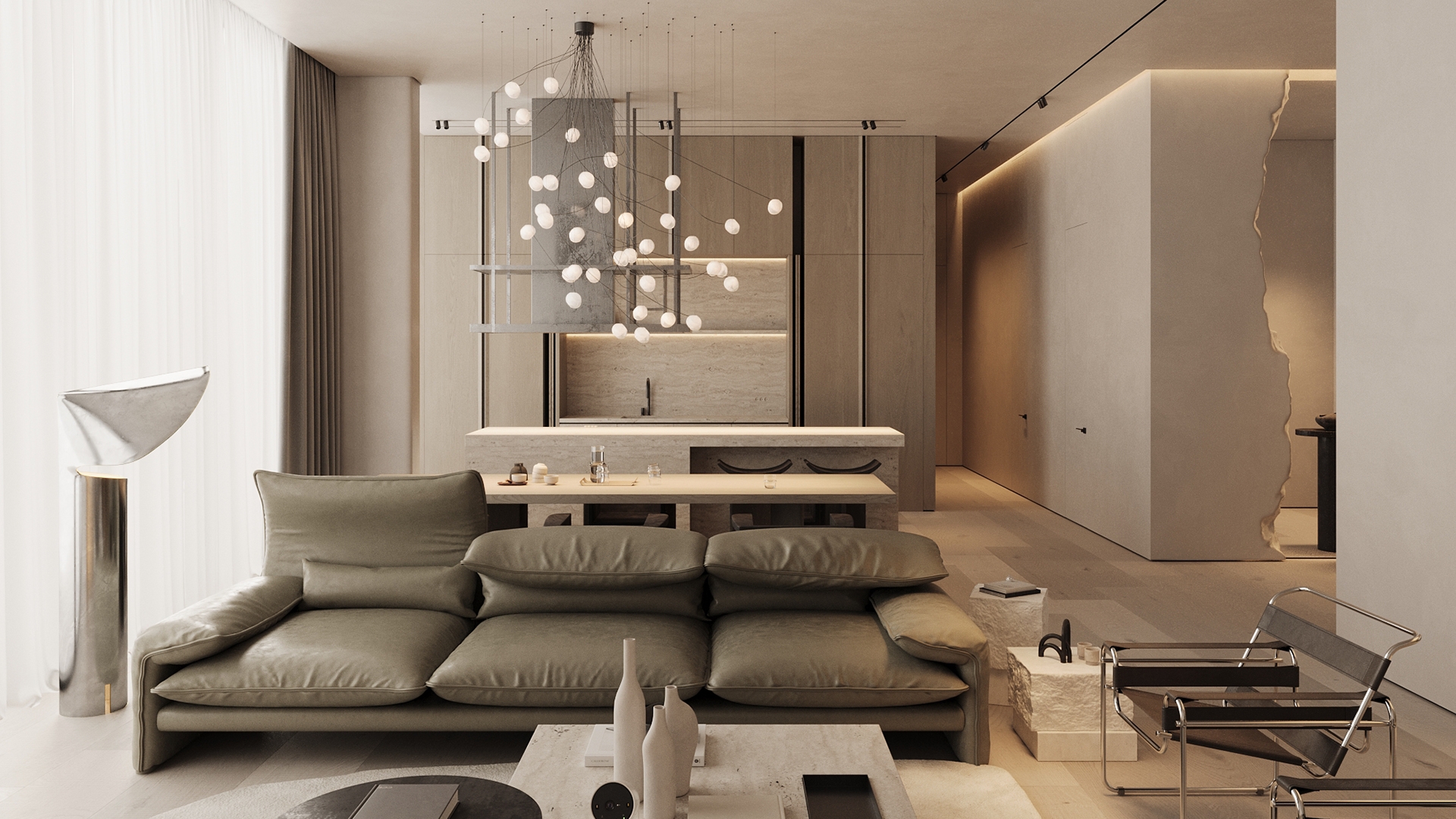Nothing shouts for attention, yet everything has presence — from the travertine island that anchors the kitchen to the curved lines of the living room furniture. The materials are few, but used with care: stone, wood, soft fabrics.

The living and kitchen areas are built around a clear set of forms and materials. A low, curved sofa sits next to two travertine tables with rounded edges, while a leather armchair adds contrast without breaking the tone. The kitchen is defined by a solid travertine island with a faceted base, paired with pleated pendant lights that bring in a softer detail. Open shelves and matte finishes keep the space practical, without losing the sense of weight and structure shared throughout the interior




In the bedroom, the fluted stone wall sets the tone. It’s the only vertical element in a room otherwise built from soft, horizontal layers: the low, upholstered bed, integrated side tables, and ambient light that washes the wall without highlighting it. Everything is fixed in place but doesn’t feel rigid.
The children’s room follows the same material language but shifts in scale and function. A padded structure runs along the wall, turning into a raised bed, play surface, and storage all at once. The forms are curved and connected—no sharp edges, no interruptions. Circular cutouts and a rope net introduce a sense of movement, but the overall space stays measured. It’s playful, but still part of the same house.




The bathroom keeps the same materials but shifts the scale. Travertine wraps the walls and sink, paired with bronze fixtures and wood panels that bring warmth without softening the architecture. The sink is a single block—cut, not assembled—anchoring the room without dominating it. Lighting is kept minimal, set into the walls to highlight the stone’s texture rather than draw attention to itself. The space is compact, stripped back, and complete.





